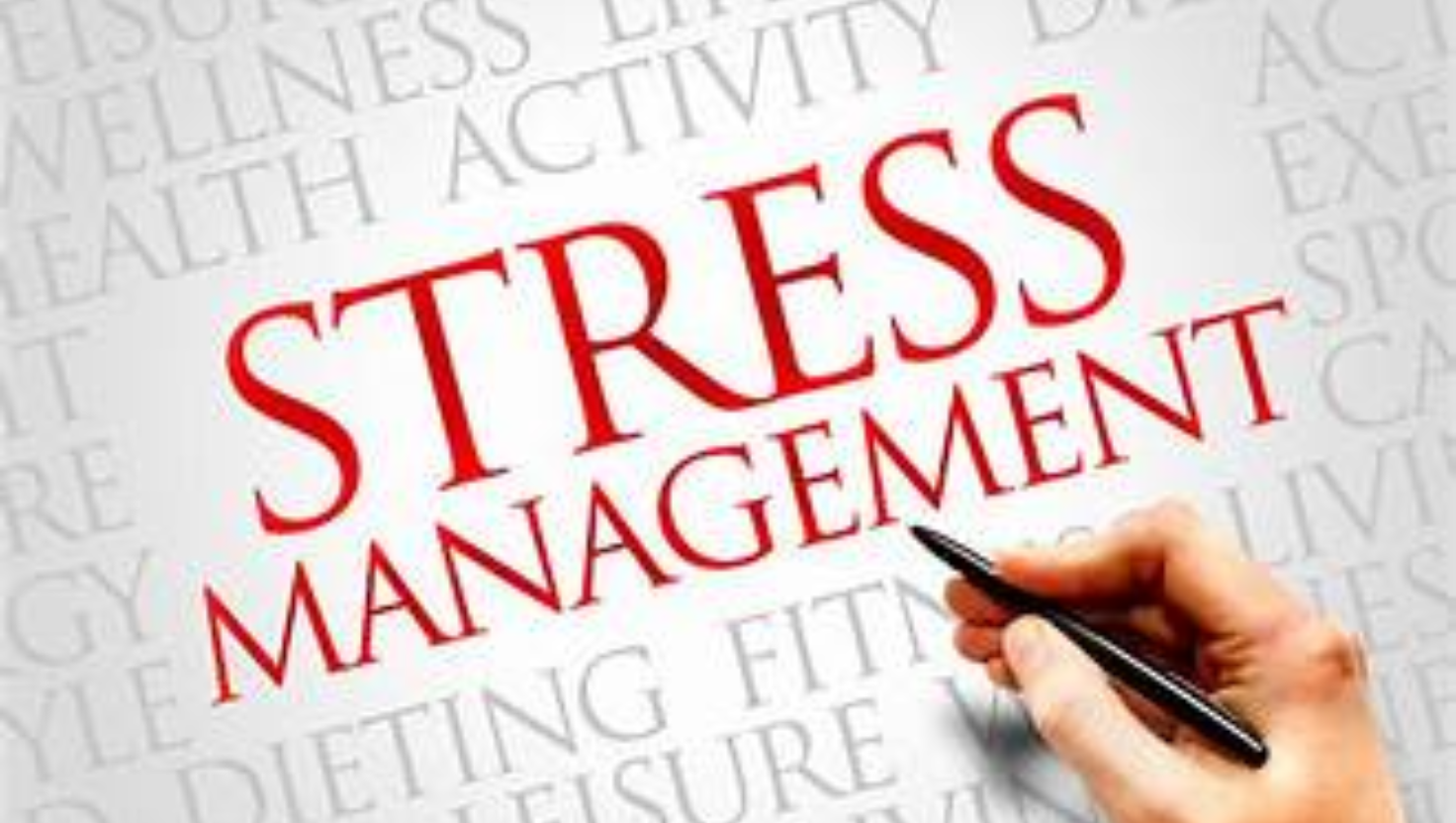Stress is something we all face, but when it becomes part of your daily life, it starts to affect everything—from your health to how well you work. That’s where learning the right stress management techniques can change your routine for the better.
This guide focuses on 14 stress management techniques to support your day-to-day routine, especially for those navigating work and life in the USA. You’ll learn how to set healthy boundaries, improve employee wellbeing, and use simple, proven methods like deep breathing exercises and mindfulness at work. These tools are more than just tips—they’re the foundation for a calmer, healthier, and more productive work-life experience.
What Is Stress and Why Does It Affect Us Daily?
Stress is your body’s reaction to a challenge or threat. When you’re stressed, your body releases hormones like adrenaline and cortisol. This gives you a short boost of energy to deal with problems. But when stress lasts too long, it harms your mental and physical health. Your heart rate stays high, your sleep gets worse, and your mind can’t relax. This is what we call chronic stress, and it can make everyday tasks feel ten times harder.
The truth is, we face many small stressors every day. Running late, noisy workplaces, tight deadlines—all of these build up. Even positive things like promotions can cause stress. That’s why having daily stress relief techniques is so important. If you don’t use good coping mechanisms, stress will keep piling up. Eventually, it turns into emotional exhaustion or even employee burnout.
Understanding Workplace Stress: Common Causes and Consequences
To manage stress well, we need first to ask, what causes stress at work? It can come from too many tasks, a lack of control, poor leadership, or toxic coworkers. Sometimes, it’s the pressure to be perfect or the fear of losing your job. Work-related stress affects everyone, from interns to top executives. And if it’s ignored, it doesn’t just hurt the worker. It affects the whole team’s workplace productivity, morale, and relationships. Stress can lead to conflicts, decreased collaboration, and a negative work environment.
Studies in the USA show that over 80% of workers feel stressed on the job. The consequences are huge. Stress leads to job burnout, low employee morale, and higher turnover. It affects how people work, think, and feel. How stress affects productivity is shocking—it can lower output by up to 50%. That’s why learning how to manage stress in the workplace is critical for both personal and company success.
Signs You’re Experiencing Harmful Stress

Not all stress is bad. But when it starts to hurt your health, it’s time to take action. Some signs are easy to spot: headaches, fatigue, or trouble sleeping. Others are hidden, like feeling numb, snapping at others, or losing interest in things you once enjoyed. These are real symptoms of stress and burnout and should not be ignored.
If you’re always tired, find it hard to focus, or feel angry for no reason, you might be facing emotional exhaustion. Emotional exhaustion is a state of feeling emotionally drained and worn out, often as a result of accumulated stress. Many people don’t talk about these feelings because they fear being judged. But knowing the signs of workplace stressors is the first step. Once you know them, you can start using the right stress management strategies to heal and recover.
14 Proven Stress Management Techniques for Work and Daily Life
We all need daily stress relief strategies that actually work. These are small changes that make a big difference and are easy to incorporate into your routine. Start with deep breathing exercises—just five minutes can calm your nervous system. Try progressive muscle relaxation to release physical tension. Write your thoughts in a journal at night. These techniques are simple yet effective, empowering you to take control of your stress.
For your workday, try planning better with simple time management strategies. Set clear priorities and say no to extra work if you’re already full. Also, take short breaks for mental clarity. Even standing and stretching can help you refocus. Use the table below for easy ideas you can try now:
TechniqueBenefit
Deep Breathing Reduces anxiety and increases calm
Time Blocking Boosts productivity and focus
Gratitude Journaling Improves mood and energy
Progressive Muscle Relaxation Relieves physical stress
Saying “No” to Extra Tasks Protects healthy boundaries
Screen-Free Lunch Breaks Refresh the Mind
Listening to Calming Music Enhances workplace wellness
3 Expert Strategies to Prevent Stress Before It Starts
Experts agree that the best way to deal with stress is to stop it before it begins. One key method is planning. If your day is chaotic, your brain stays in panic mode. That’s why experts recommend time management at work. Plan your day in blocks and leave space for breaks or delays. This makes you feel more in control.
Another strong method is setting healthy boundaries. Don’t answer emails after hours or take calls during meals. This is not just a suggestion, but a powerful tool that can empower you to take control of your work-life balance. Lastly, ask for help when needed. How HR can support employee wellbeing is by making sure people have access to resources, not just when they’re burned out, but before they get there. This proactive support leads to a resilient workforce that performs well and stays happy.
Practical Coping Mechanisms for High-Stress Workdays
When your stress is already high, you need fast and simple tools. Start by changing your environment. Move to a quiet space or go outside for fresh air. Practice mindfulness at work by focusing on your breath or surroundings. These coping mechanisms train your brain to stay calm even in chaos.
One employee from New York shared that after adding three-minute meditation breaks between meetings, she felt clearer and less rushed. Another said writing down their top three wins of the day boosted their confidence. These real-world examples show that small shifts can fight even the hardest work-related stress.
Leveraging Technology to Beat Stress at Work
In today’s digital world, your phone can be your best friend—or your worst enemy. But used wisely, tech helps reduce stress. Apps like Headspace, Calm, and Insight Timer offer mindfulness sessions at work. These teach you how to relax, even in the middle of meetings. Some smartwatches can remind you to breathe or move every hour, supporting health and wellness at work.
See the quick comparison below to choose the right tool for you:
App NameMain FeatureCost
Headspace Guided meditations & sleep tools Free + Premium
Calm Breathing & Sleep Exercises Free + Premium
Insight Timer Live mindfulness sessions, Mostly Free
Using these tools during your breaks can improve your mental health resources without extra effort.
Building a Resilient Mindset: Emotional Wellness at Work

You can’t always control your job, but you can change how you handle stress. That’s the power of a resilient employee. Building mental strength takes practice. Start by re-framing your thoughts. Instead of thinking, “This is too much,” say, “I’ll do one thing at a time.” This shift builds emotional power over time.
Creating a resilient workforce also means teams need to support each other. Celebrate small wins, be kind when someone struggles, and encourage regular wellness programs. These small steps improve overall employee well-being and create long-term change in how people feel and work.
You Also Read This Article: Habits That Reduce Brain Fog and Increase Mental Clarity
When to Seek Professional Help for Stress and Burnout
Sometimes, stress grows too big to handle alone. If you’re always tired, getting sick often, or feeling numb, it may be time to ask for help. Therapy, coaching, and support groups are all great options. Many companies now offer corporate wellness programs that include free counselling or workshops.
Don’t wait until you break down. Knowing how to talk to your manager about stress can also lead to better support. Remember, how to support employees with mental health isn’t just about emergency help—it’s about offering care early. That’s how we build a stronger, healthier workplace.
Your Holistic Workplace Wellness Toolkit (Bonus Resources & Worksheets)
To keep growing, you need tools that support your mental health every day. Try printable worksheets for setting goals, tracking moods, and planning your week. These tools boost your control and reduce stress.
Explore these free USA-based wellness resources below:
ResourceWhat It Offers
MentalHealth.gov Tips on how to avoid burnout
NIMH Science-backed stress management strategies
MindTools Guides for conflict resolution at work
Calm Business Corporate HR stress initiatives
These extras will help you build better habits and improve your overall employee wellbeing at work and at home.
Conclusion: Creating a Healthier, Stress-Free Work Life Starts Now
Stress is a part of life, but it doesn’t have to control you. By using these stress management techniques, you can create more peace in your day, boost your productivity and focus, and protect your mental and physical health. Whether you’re starting with deep breathing exercises, setting healthy boundaries, or trying mindfulness at work, every small step makes a difference.
Remember, why stress management matters at work isn’t just about reducing tension—it’s about building a supportive work environment where everyone can thrive. From employees to leaders, we all play a role in shaping a workplace that values wellbeing. So don’t wait for burnout to hit. Start using these daily stress relief strategies now, share them with your team, and help build a stronger, more resilient workforce—one that’s ready to succeed without stress leading the way.
FAQS:
1. What are the most effective stress management techniques for employees?
The best stress management techniques for employees include deep breathing exercises, progressive muscle relaxation, journaling, and using mindfulness sessions at work. These methods improve mental and physical health while also boosting workplace productivity. Practising these consistently helps reduce emotional exhaustion and prevents employee burnout.
2. How can I manage stress during a high-pressure workday?
On high-stress days, use quick coping mechanisms like stepping away for fresh air, doing short mindfulness exercises, or focusing on slow breathing. These are proven ways to reduce stress fast and help you regain focus. Building a routine that includes short breaks and time management at work also reduces pressure throughout the day.
3. What causes stress at work the most?
The top workplace stressors include tight deadlines, poor communication, lack of support, long hours, and unclear expectations. These factors can lead to chronic stress, employee burnout, and low employee morale. Learning how to manage stress at work begins by identifying these issues early and using wellness programs or support resources.
4. When should I seek professional help for stress?
If stress is affecting your sleep, health, or happiness—or if you notice symptoms of stress and burnout like anxiety, fatigue, or loss of interest—it’s time to talk to a professional. Many companies in the USA offer access to mental health resources, HR stress initiatives, or corporate wellness programs that include counselling services.
5. How can HR support employee well-being more effectively?
How HR can support employee wellbeing involves creating access to flexible work options, providing health and wellness at work programs, organising mindfulness sessions, and leading open discussions about mental health. Tracking the success of wellness initiatives and asking employees for feedback ensures programs are working and tailored to real needs.
Welcome to Depthoverdrive,
I’m Syeda Naqvi, a passionate SEO content writer with 3 years of experience in crafting engaging, optimized, and reader-friendly content. I specialize in creating content that not only ranks on search engines but also provides real value to readers, with a strong understanding of keyword research, on-page SEO, and content strategy.


1 thought on “14 Stress Management Techniques to Support Your Day-to-Day Routine”